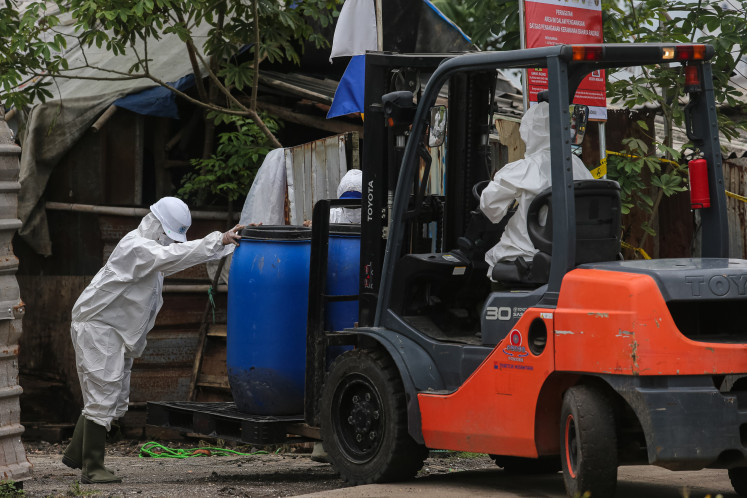Popular Reads
Top Results
Can't find what you're looking for?
View all search resultsPopular Reads
Top Results
Can't find what you're looking for?
View all search resultsGovt still studying how to finance Prabowo’s 70,000 cooperatives
President Prabowo Subianto’s plan to build 70,000 village cooperatives could disrupt conventional banks and risk financial mismanagement.
Change text size
Gift Premium Articles
to Anyone
T
he government is still studying the financing mechanism for the establishment of 70,000 Red and White Village Cooperatives as envisioned by President Prabowo Subianto, Home Minister Tito Karnavian said on Tuesday.
He said that the government is opening opportunities for the Indonesian State-Owned Lenders Association (Himbara) to provide affordable loans to village cooperatives.
“The red-and-white village cooperatives will get loans with low interest rates from Himbara at Rp 5 billion each,” Tito said, as quoted by Tempo.
Tito added that village budgets could also be used to establish the village cooperatives.
Currently, he said, the allocation of village budgets was 70 percent for village initiatives and the remaining 30 percent to support the central government’s programs.
“The 30 percent portion can be used to establish the Red and White Village Cooperatives,” he said.
The plan, however, could disrupt conventional banks which have long dominated the financing for micro, small and medium enterprises (MSMEs) through the KUR microcredit programs, economist and public policy expert Achmad Nur Hidayat warned on Monday.
“There is a potential for competition between cooperatives and conventional banks in providing credit to small and micro businesses,” Ahmad said in a written statement, as quoted by Tempo.
In the short term, conventional banks may not experience immediate effects. However, in the long run, village cooperatives as an alternative financing source could reduce MSMEs’ reliance on banks, particularly in agriculture and small-scale trade sectors.
“If cooperatives can offer more flexible loan schemes with lower interest rates than KUR, micro borrowers might shift from banks to cooperatives,” Achmad said.
Such a shift could affect banks' loan portfolios, particularly those that rely on KUR as a key driver of growth. It could also reshape bank roles in microfinance, potentially shifting them from direct lenders to financial backers of cooperatives.
“This model has been implemented in several countries, where cooperatives act as intermediaries between large financial institutions and micro-entrepreneurs. Banks can still generate profits through indirect financing,” he said.
Achmad also pointed out that many cooperatives struggle with financial management, transparency and professionalism. Poor governance has led to issues such as loan defaults and fund mismanagement.
If these village cooperatives are not managed professionally, Achmad warned that the government’s substantial funding could go to waste or even lead to financial scandals, especially since each cooperative is expected to receive Rp 5 billion (US$305,587) in funding.
Meanwhile, the plan has faced pushbacks from village heads in Purworejo, Central Java.
Krandegan village head Dwinanto criticized the frequent policy changes between administrations, creating inconsistencies in village governance. He said the new initiative contradicts existing laws on village fund management.
Dwinanto also questioned the source of the cooperative's initial capital, which likely comes from debt and could potentially increase the village's burden.
"If the initial capital of the cooperative is debt, who will pay the interest if the cooperative's activities fail economically? Is the interest also charged to the village fund?" he asked.











